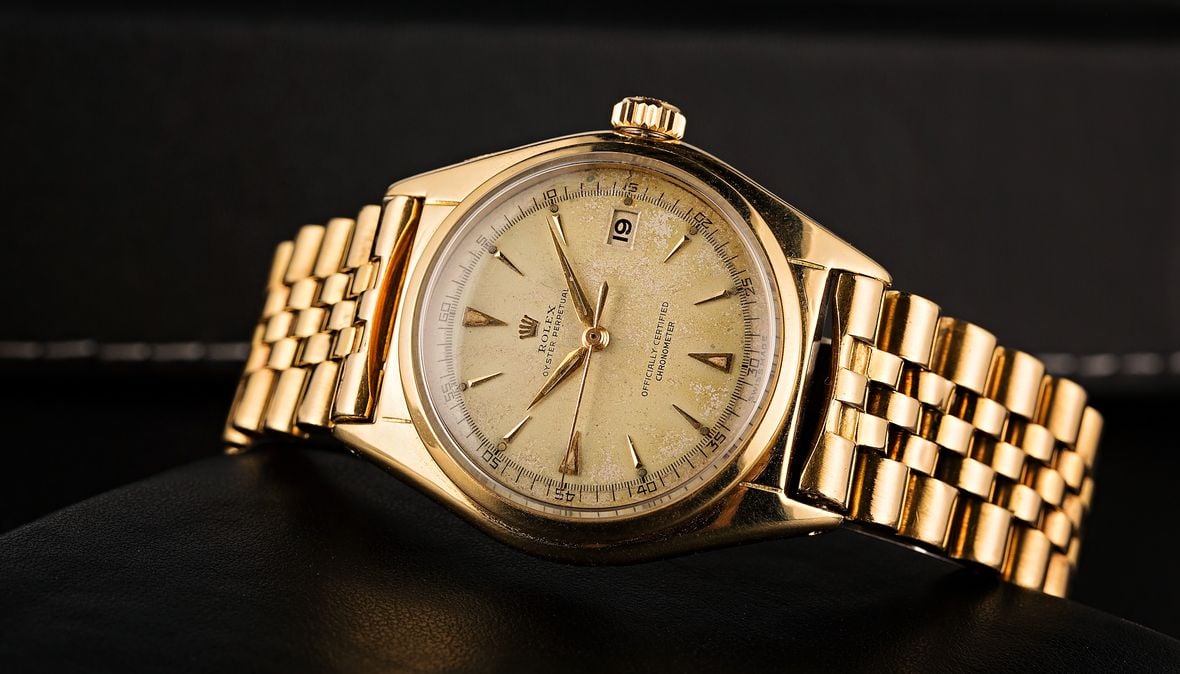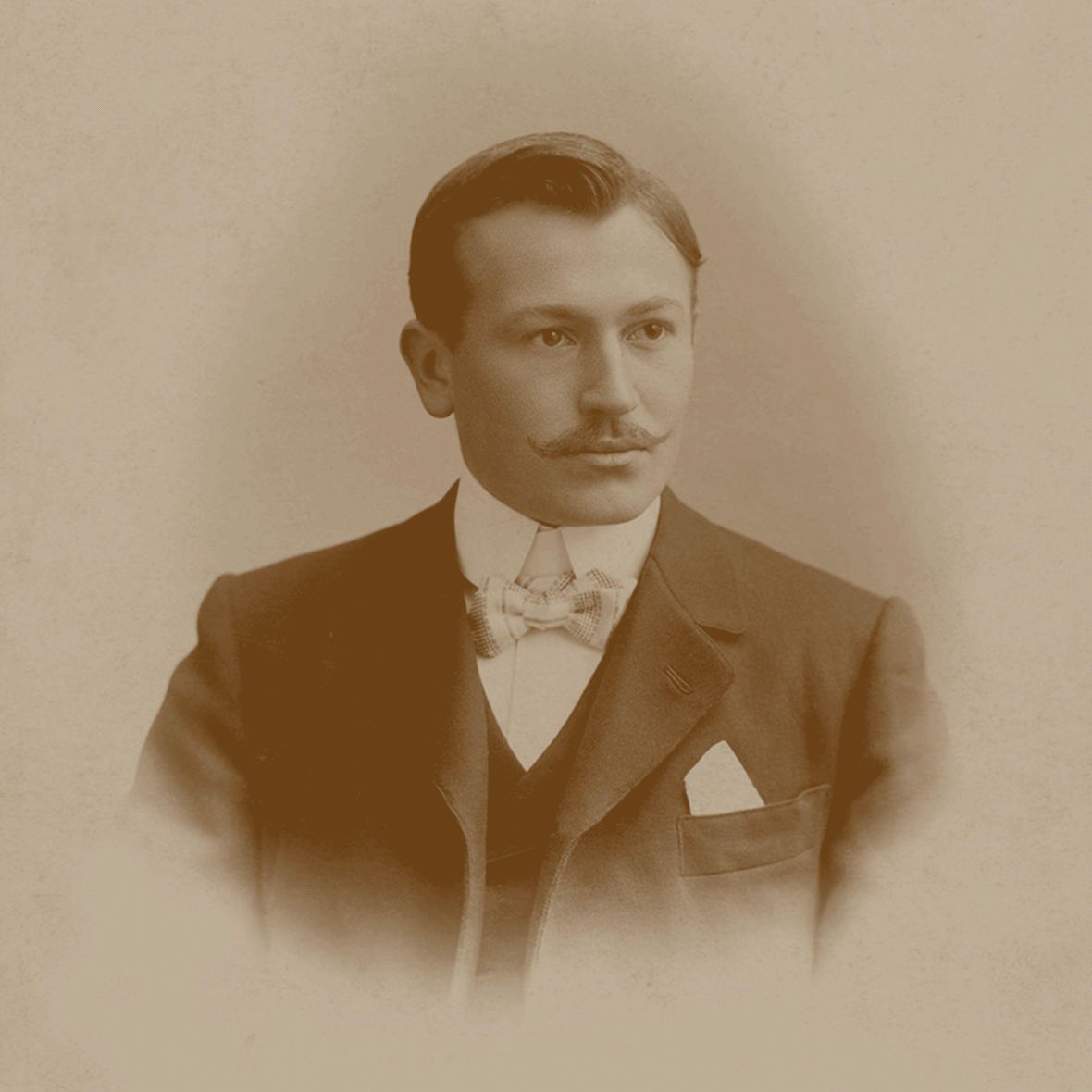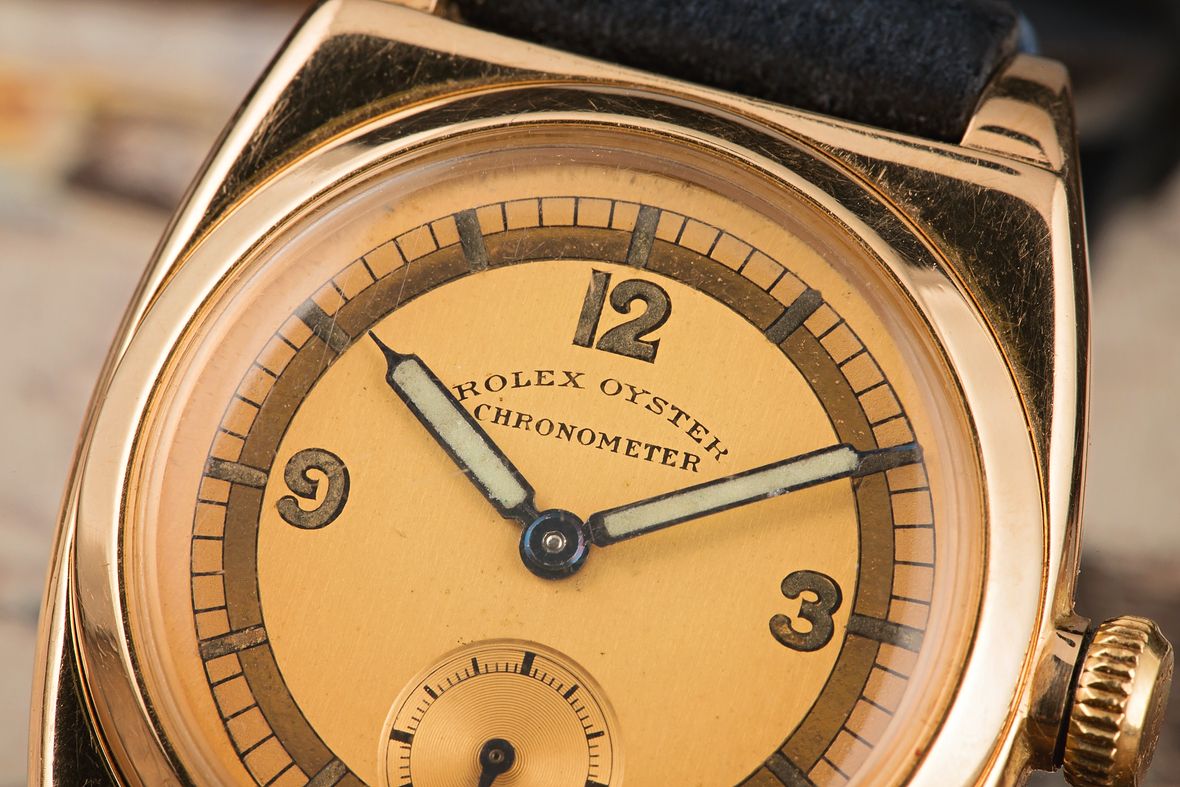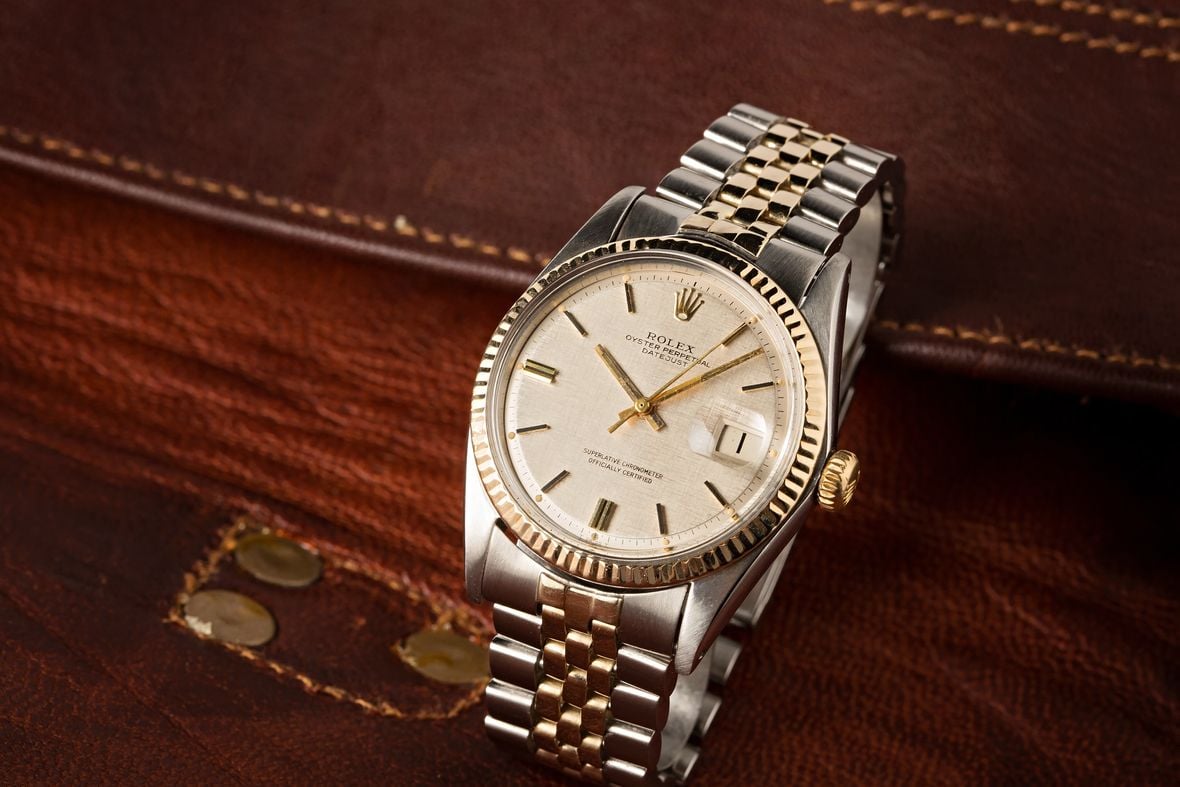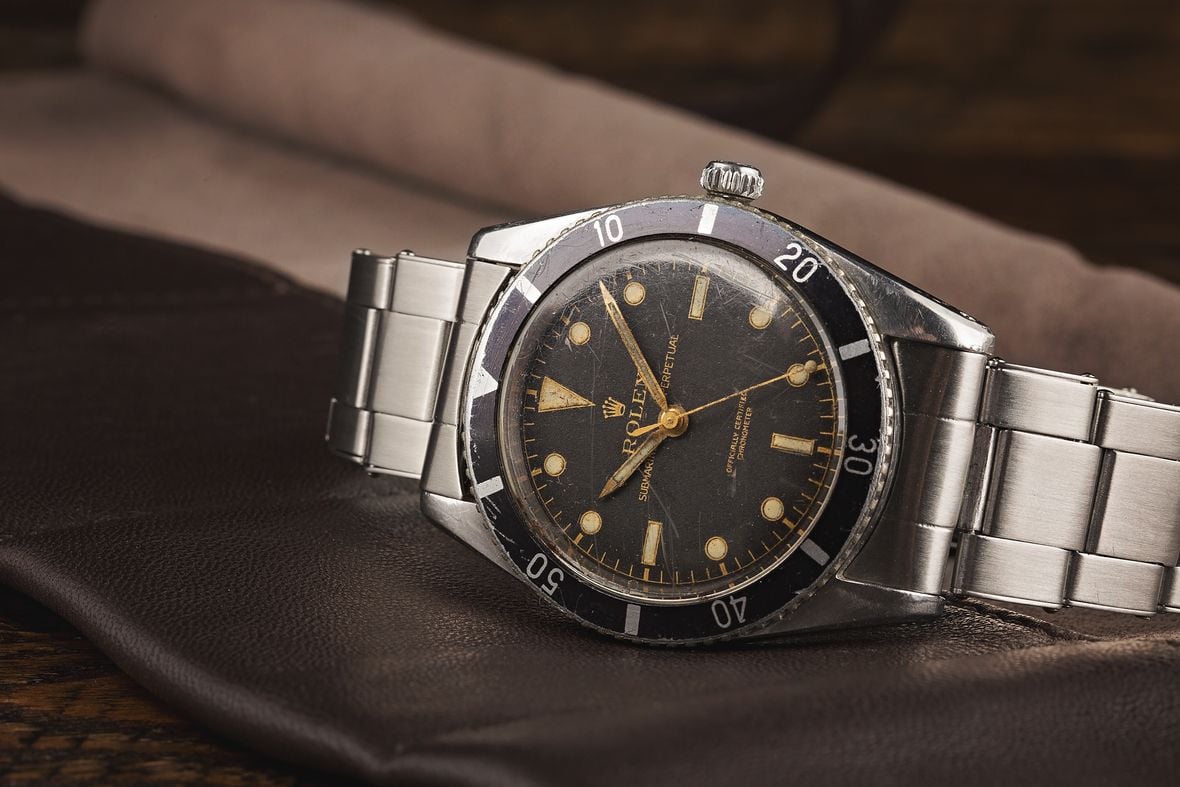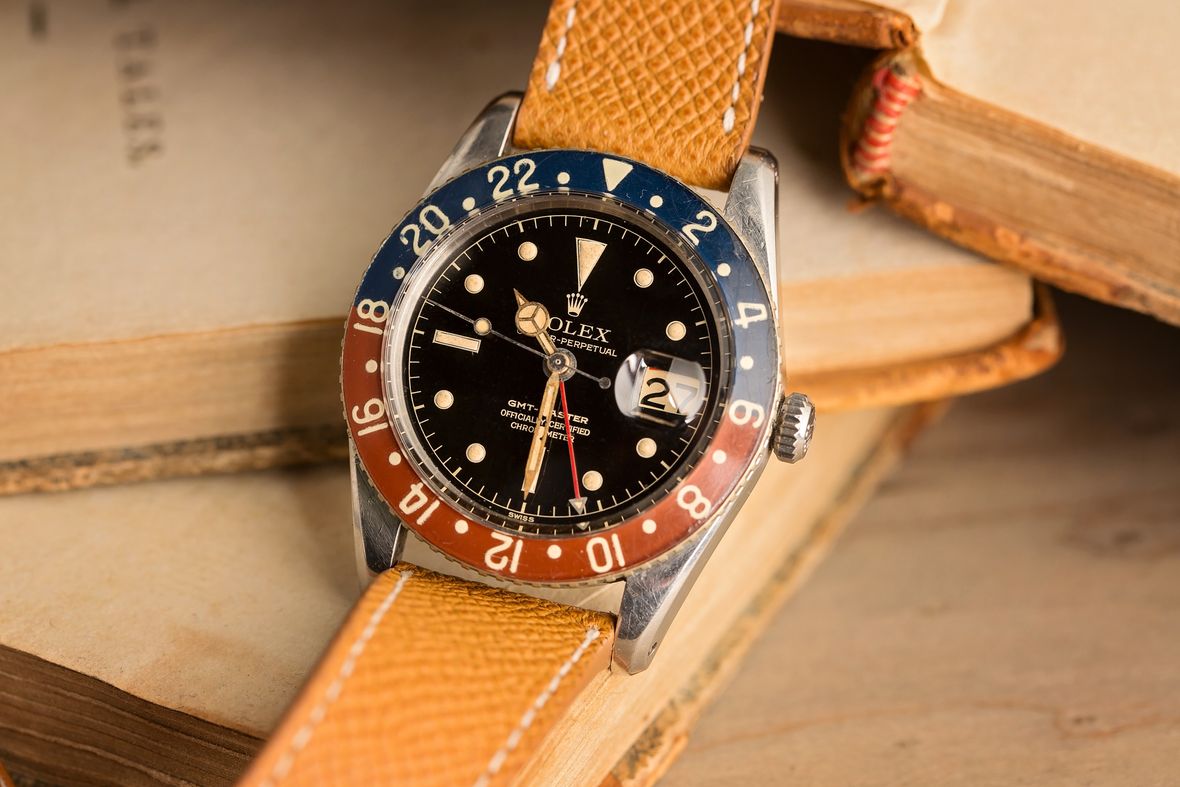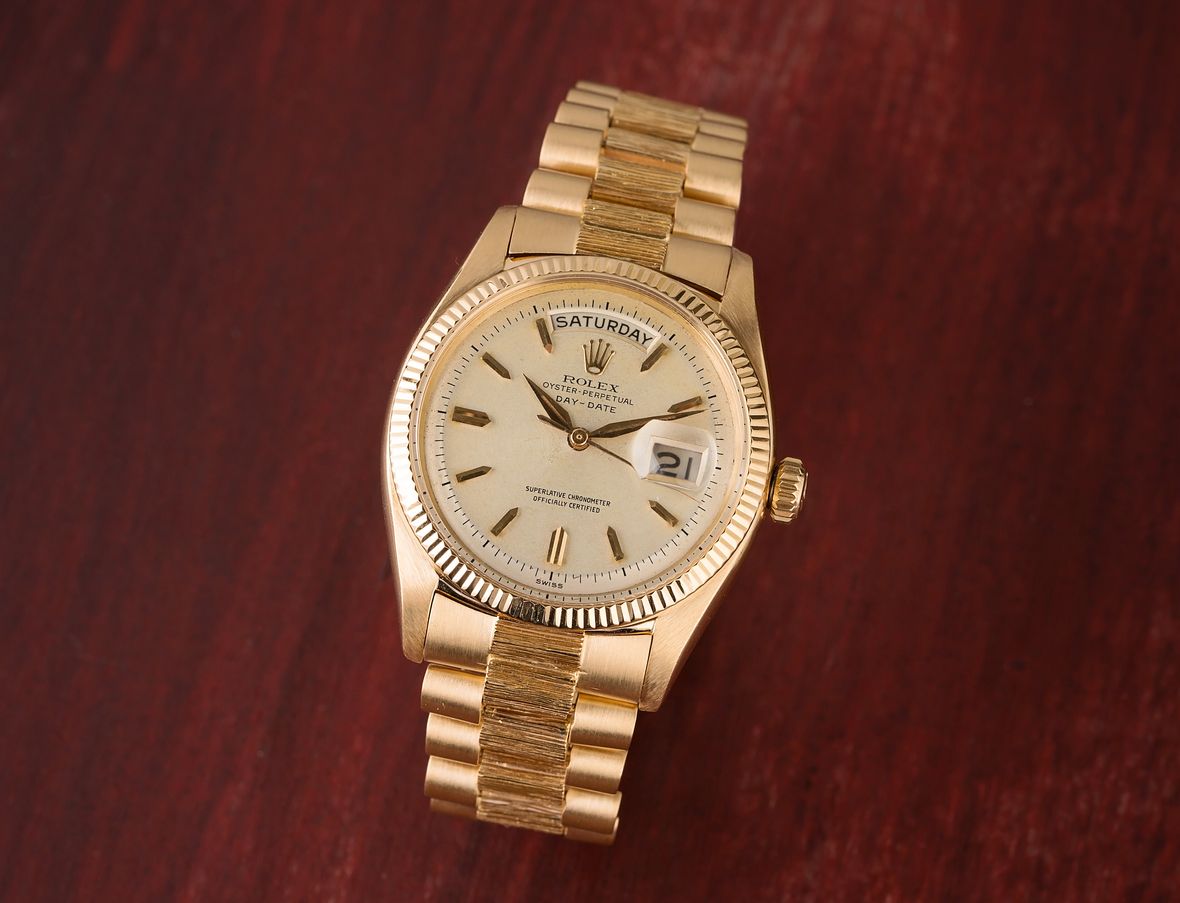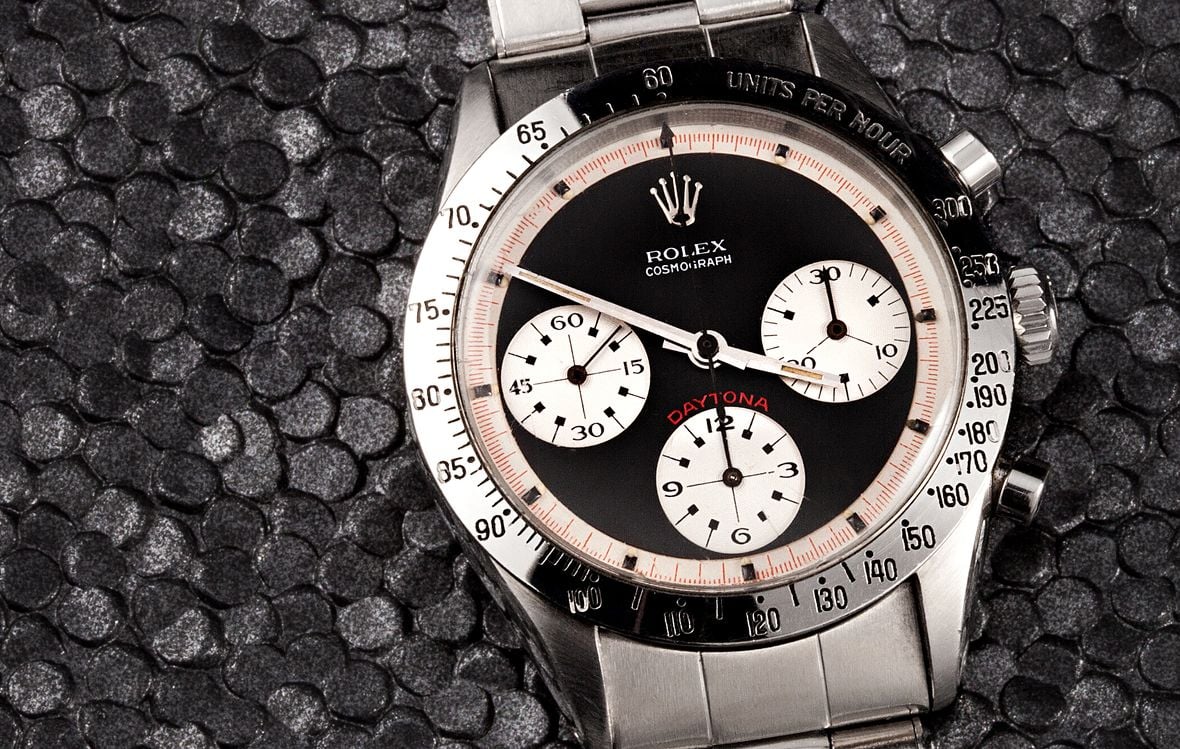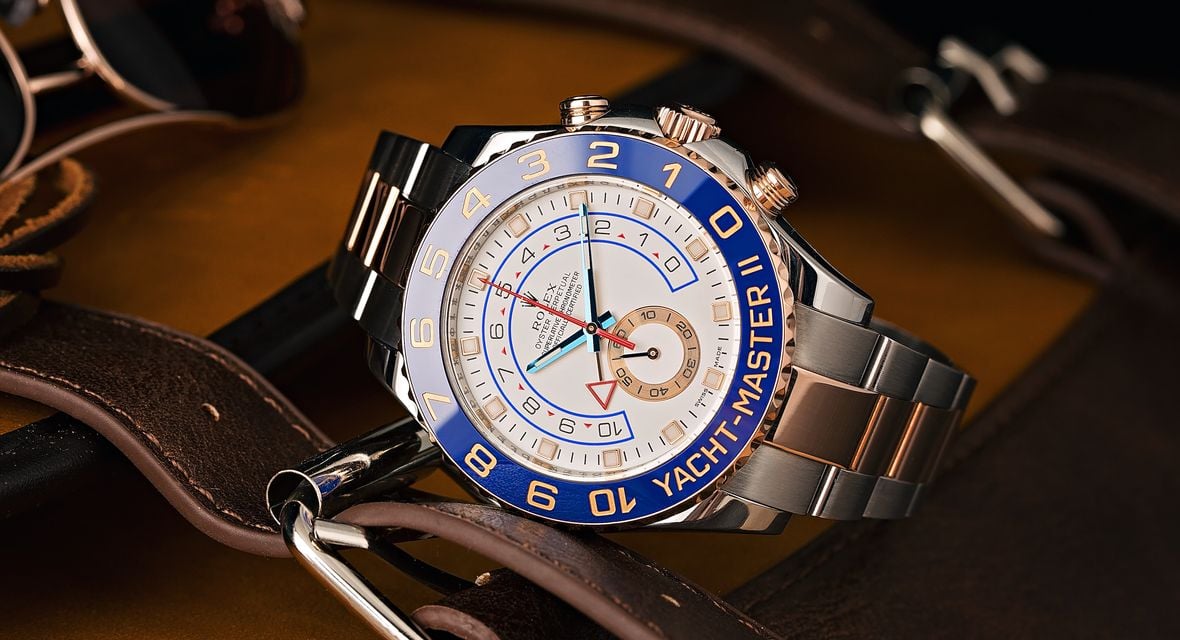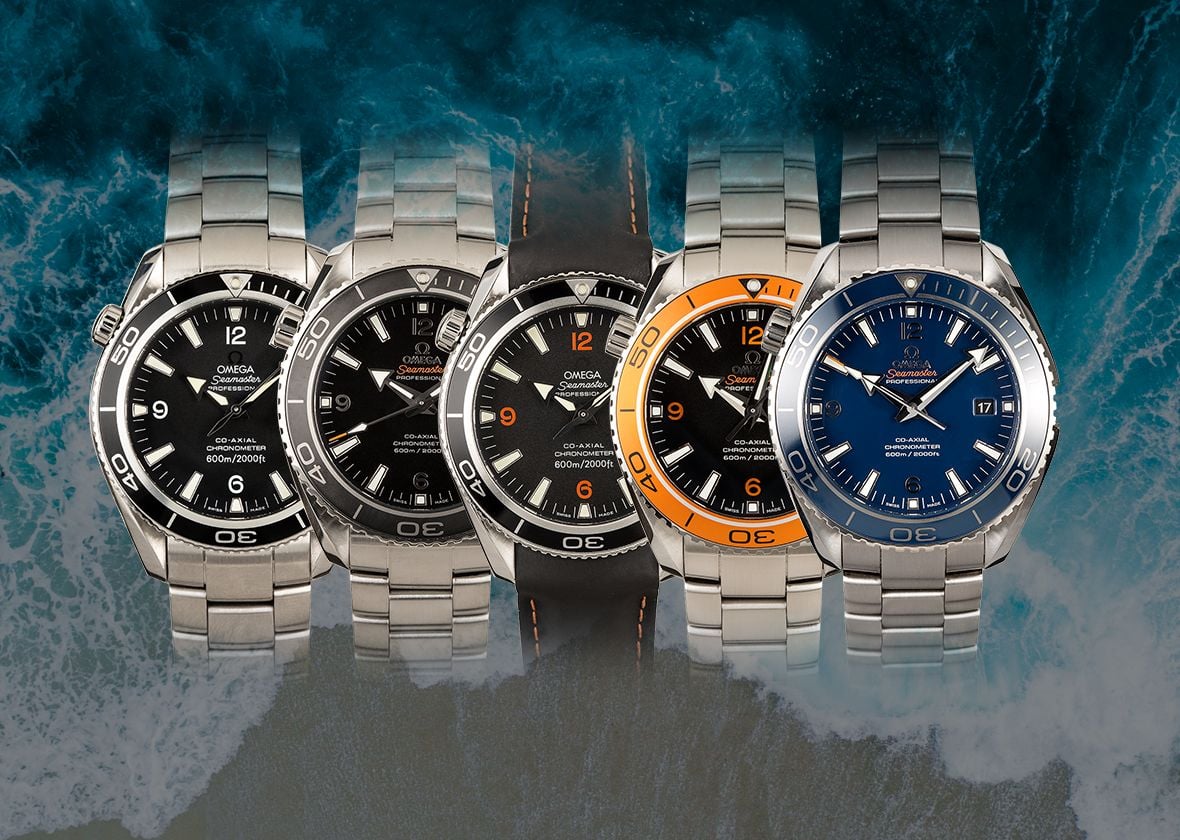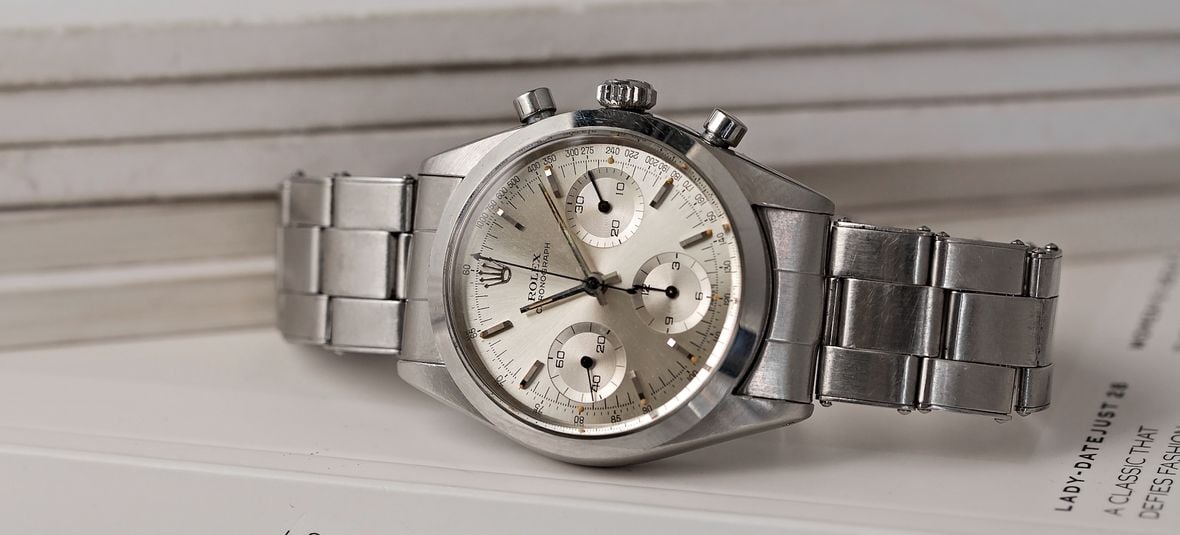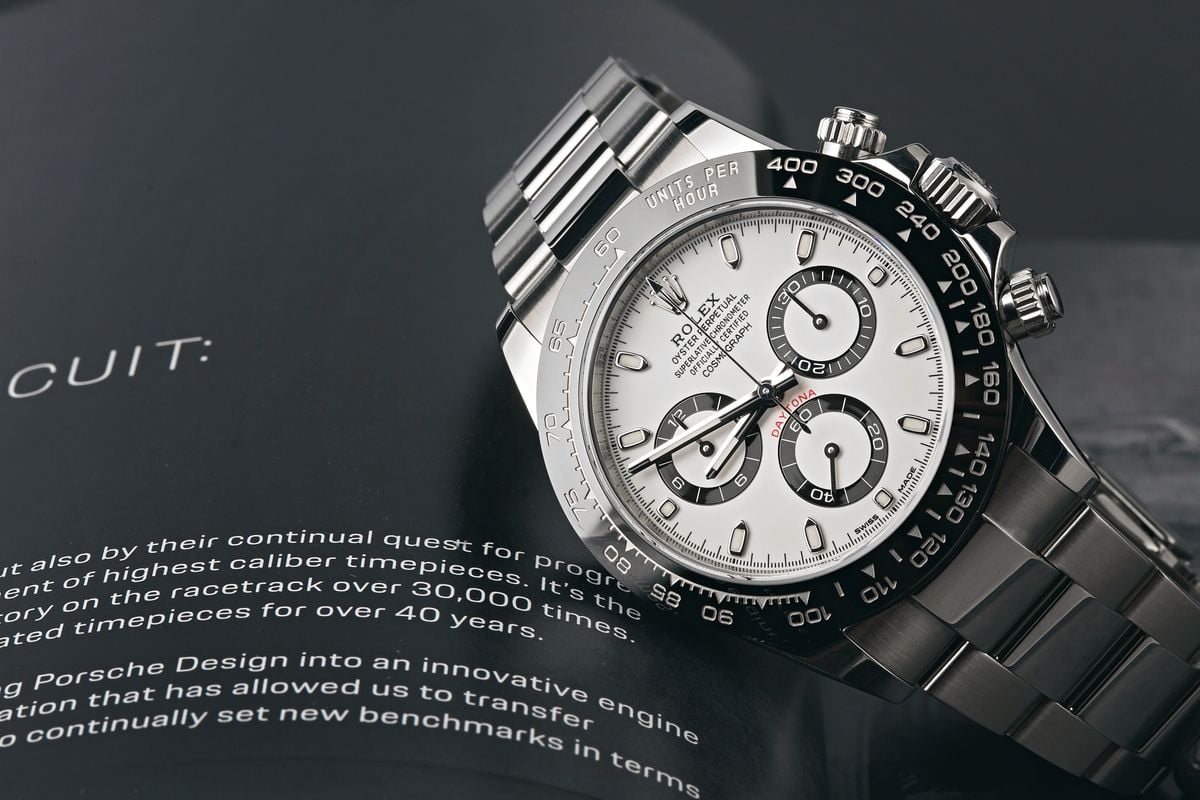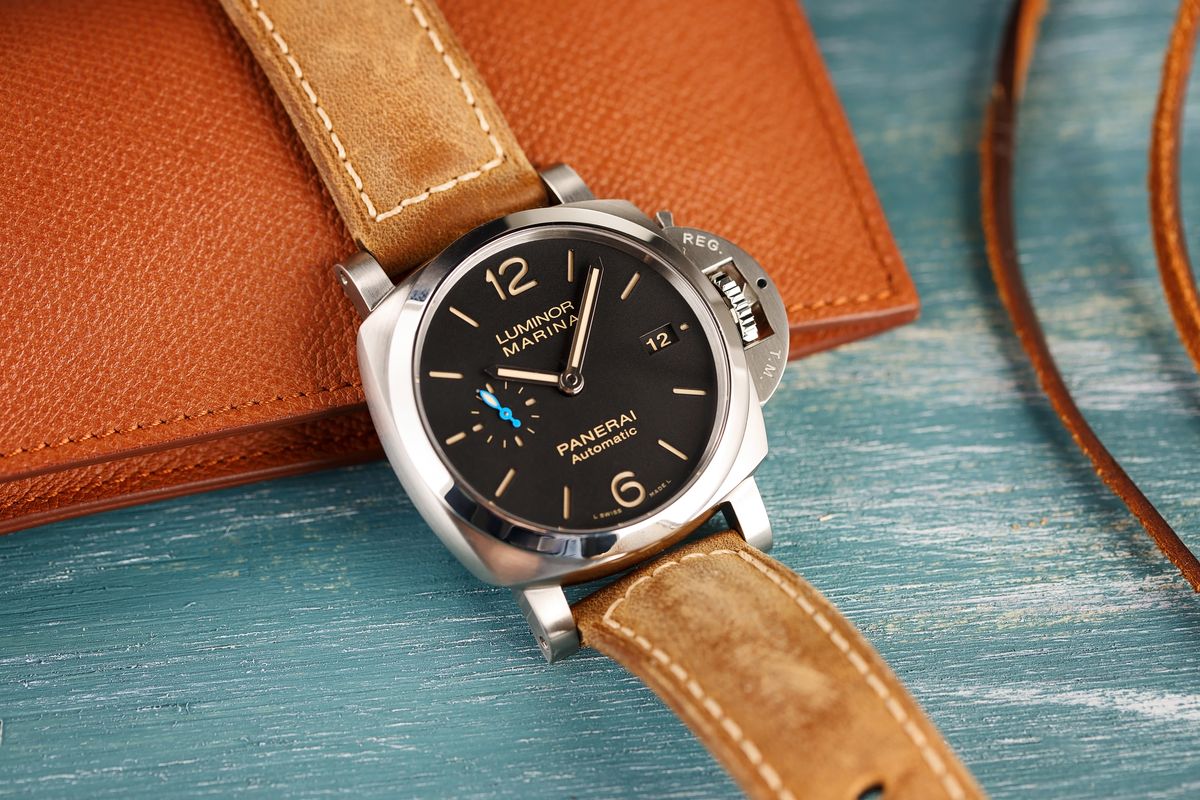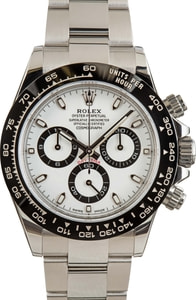Who was the man behind history’s most famous watch brand? Born in the late-1800s and orphaned at an early age, Hans Wilsdorf would forever change the face of watchmaking when he founded his watch company in 1905. That company would later become known as Rolex.
Armed with great vision, pioneering ideas, and a masterful understanding of marketing, Hans Wilsdorf built the brand to become the biggest name in the business, as he built an innovative selection of Swiss-made Rolex watches. From introducing the very first waterproof wristwatch to developing the movement architecture that modern automatic watches still rely on, Rolex’s innovations have undoubtedly benefited the watchmaking industry at large.
Whether the Oyster Perpetual, Datejust, Day-Date, Submariner, GMT-Master, or Explorer, an impressive number of Rolex watch models that came to be during Hans Wilsdorf’s time have become icons of the watch world. And Hans Wilsdorf’s legacy continues to fuel Rolex’s pursuit of making the world’s finest and most desirable timepieces. This is the story of Hans Wilsdorf, the founder of Rolex.
Click here for our Ultimate Buying Guide on Rolex watches.
The Timeline of Hans Wilsdorf and Rolex
Hans Wilsdorf & Rolex Timeline
– 1881: Born in Bavaria (now part of Germany) as Hans Eberhard Wilhelm Wilsdorf
– 1893: Became an orphan at the age of twelve
– 1900: Began working in La Chaux-de-Fonds, Switzerland for Cuno Korten
– 1902: Discovered that Aegler in Bienne, Switzerland, was manufacturing small ebauche movements
– 1903: Moved to London, England
– 1905: Established the Wilsdorf & Davis company, which specialized in exporting watches to the British Empire, at the age of 24
– 1908: Registered the name Rolex
– 1910: A Rolex watch became the world’s first wristwatch to receive the Swiss Certificate of Chronometric Precision, awarded by the Official Watch Rating Center in Bienne
– 1911: Married Florence Frances May Crotty
– 1914: A 25mm Rolex wristlet won a class “A” certificate at the Kew Observatory
– 1914: World War I begins
– 1919: Moved Rolex headquarters to Geneva, Switzerland
– 1920: Registers Montres Rolex S.A. in Geneva
– 1925: Trademarks the now-famous five-point Rolex crown logo
– 1926: Patents the Rolex Oyster, the first dustproof and waterproof wristwatch
– 1927: Reserves the front page of the Daily Mail newspaper to announce to the world that the waterproof Rolex-Oyster survived Mercedes Gleitze’s 15-hour swim in the English Channel
– 1931: Develops and patents the Perpetual rotor, a mechanism to automatically wind up the movement
– 1939: World War II begins
– 1944: Establishes the Hans Wilsdorf Foundation after his wife passes away and transfers 100% of his shares to the foundation
– 1945: Releases the Rolex Datejust to mark the 40th anniversary of the company
– 1950s: A decade of famous Rolex watches are introduced: Explorer, Submariner, GMT-Master, Milgauss, Day-Date, and Lady-Datejust
– 1960: Dies in Geneva, Switzerland, on July 6
About Hans Wilsdorf
Hans Eberhard Wilhelm Wilsdorf was born in 1881 in Bavaria as the second son to Anna and Ferdinand Wilsdorf. However, by the age of 12, Hans Wilsdorf was an orphan and he was sent to boarding school, where he received a solid education. His interest in language turned out to be pivotal and his ability to speak French and English, along with his native German, paved the way for Hans Wilsdorf to work abroad.
In 1900, Hans Wilsdorf began working for Cuno Korten in La Chaux-de-Fonds, Switzerland. Cuno Korten exported Swiss pocket watches and Hans Wilsdorf was responsible for corresponding in three languages. This early experience with international watch sales would prove to be crucial in Hans Wilsdor’s career.
During his time in Switzerland, Hans Wilsdorf became aware of watch movement maker Aegler, in the nearby Swiss town of Bienne. Aegler was manufacturing small ébauches (unfinished base movements) with lever escapements – ideal for wristwatches, which, despite the current disdain for them among men, Hans Wilsdorf saw as the future of watches. In 1903, Hans Wilsdorf moved to London, England, to work for yet another watch company.
He then joined forces with his brother-in-law, Alfred James Davis, and the two men established the Wilsdorf & Davis company in 1905. Their company specialized in exporting watches – both pocket and wrist – throughout the British Empire.
However, as Hans Wilsdorf tells it in “The Story of Rolex” published in 1948, “In those days, a wrist-watch was considered a joke. The few who wore them were laughed at.” He further added, “People said a watch with such a tiny, delicate mechanism could never withstand the violent gestures of hand and arm. And, of course, it was too small to be accurate.”
Hans Wilsdorf ignored the criticisms; he was sure that “the wrist-watch had a brilliant future before it” and pushed on with his vision of wristwatches overtaking pocket watches as the go-to personal time-teller. He placed “the largest order for wrist-watches ever booked at that time” with Aegler in Bienne.
The Origins of Rolex
In three short years, Wilsdorf & Davis became a top player in British watch commerce; so the two men thought it’d be best to come up with a brand name to stamp on the dials of the watches they exported. This idea ran contrary to the customs of the industry at the time, which was to have the name of the importer on the dials and/or movements. Yet again, Hans Wilsdorf disregarded norms as he envisioned a different future. He registered the name “Rolex” as a trademark for Wilsdorf & Davis Ltd in 1908.
According to company lore, a genie whispered the name “Rolex” into Hans Wilsdorf’s ear while he was riding a horse-drawn double-decker in London. Whether or not that magical tale is to be believed, what is true is that the name “Rolex” was ideal since it’s easy to remember, simple to pronounce in any language, and most importantly at the time, short enough to fit on a dial alongside the importer’s name.
Hans Wilsdorf admits that the Rolex name didn’t come roaring out the gate: “At first I ventured to inscribe “Rolex” on one watch in every six, hoping that this watch would get through and be sold.” He eventually marked more watches with Rolex and within less than two decades, all of them would proudly bear the Rolex name.
In 1910, Hans Wilsdorf sent a Rolex watch to the Official Watch Rating Center in Bienne and it returned as the world’s first wristwatch to be awarded the Swiss Certificate of Chronometric Precision. On July 15, 1914, the British Kew Observatory awarded a small 25mm Rolex wristwatch with a class “A” precision – a merit that was previously exclusive to marine chronometers.
Less than two weeks later, Austria-Hungary declared war on Serbia on July 28, 1914, effectively beginning the First World War.
Rolex Moves to Switzerland
By 1914, Hans Wilsdorf’s headquarters in London had more than 60 employees on the payroll and it was the export center of every market to which the company exported. However, in 1915, the British government imposed a 33.3% customs duty on watches. Therefore, Hans Wilsdorf had to move the export operations to his Bienne Switzerland offices, which had already been operating for a few years thanks to the business ties with Aegler.
Hans Wilsdorf established the Rolex Geneva office in 1919 as the sole proprietor, and Montres Rolex S.A. was registered in Geneva in 1920. Therefore, the Bienne factory served as the center of movement manufacturing while the Geneva office was where Rolex watch designs and marketing took place. From then on, Rolex was no longer headquartered in England but in Switzerland.
1926 proved to be a busy year for Hans Wilsdorf and Rolex. In July, he bought the rights to Paul Perregaux and Georges Perret’s patent for a winding crown system that screwed into the case to create a watertight seal. That same month he registered the “Oyster” name. In October that same year, he filed a patent for a waterproof watch case that used the Perregaux/Perret system but also included many other improvements and modifications. In 1926, the now famed Rolex Oyster case was born as the world’s first waterproof and dustproof wristwatch.
The following year, Hans Wilsdorf equipped Mercedes Gleitze with a Rolex Oyster watch as she attempted to swim the English channel. After over 10 hours in the cold water, the Rolex Oyster watch emerged intact. Subsequently, the master marketer booked the front page of the Daily Mail newspaper to announce “The Greatest Triumph in Watch-Making” achieved by Rolex and thus, inaugurated the concept of the official brand ambassador.
The next big milestone in Rolex’s entire history was the creation of the world’s first self-winding watch mechanism fitted with a “Perpetual rotor” in 1931. The rotor serves to automatically wind the watch smoothly and silently when the watch is on the wearer’s wrist. The waterproof Oyster case and the automatic Perpetual movement came together to form the Oyster Perpetual, which remains at the core of almost every Rolex watch that comes out of the factory today.
The Expansion of Rolex
With the blueprint for waterproof automatic chronometers under his belt, it was off to the races for Hans Wilsdorf and Rolex. Following the success of Mercedes Gleitze’s real-world use of the Oyster, Hans Wilsdorf sought out other high-profile opportunities to test Rolex watches in extreme environments. In return for supplying Rolex watches, Hans Wilsdorf requested that wearers share their feedback on how the timepieces performed so that he could make improvements where necessary.
In 1933, the first expedition to fly over Everest was equipped with Rolex Oyster watches as was driver Sir Malcolm Campbell when he set a land speed record of over 300 miles per hour while driving his Blue Bird car at the Bonneville Salt Flats in Utah.
1945 was the 40th anniversary of Hans Wilsdorf’s company so he commemorated the event the best way he knew how – with a new Rolex model named the Datejust. The Rolex Datejust was the world’s first wrist chronometer that displayed the date via a window on the dial instead of a conventional pointer hand. It also featured a new bracelet called the Jubilee. The Datejust went on to become one of Rolex’s most famed watch models and the Jubilee remains an integral bracelet in the brand’s collection.
Post-World War II, Hans Wilsdorf gifted special Rolex watches to the heroes of the era. In 1946, the 50,000th Rolex officially certified as a Swiss chronometer (a yellow gold Oyster Perpetual) went to General Henri Guisan, who was the commander in chief of the Swiss Army during the Second World War. The 100,000th Rolex chronometer (a rose gold Datejust) was gifted in 1948 to Winston Churchill, the prime minister of Great Britain during most of WWII. In 1951, the 150,000th Rolex chronometer (a yellow gold Datejust) was offered to General Dwight D. Eisenhower, who served as Supreme Commander of the Allied Expeditionary Force in Europe during WWII (and later became the 34th president of the United States).
The 1950s saw the rapid expansion of Rolex’s catalog with a slew of new models, built to serve as tools for specific needs. In true form, Hans Wilsdorf equipped the 1953 British Mount Everest expedition with Rolex watches. After Tenzing Norgay and Edmund Hillary successfully became the first men recorded to reach the summit, Wilsdorf launched the Rolex Explorer watch later that year in honor of their achievement. 1953 was also the year the Submariner debuted as a purpose-built diving watch – and the first to be rated to 100 meters deep – for skin and SCUBA divers of the era. In 1955, the Rolex GMT-Master is released, developed for Pan American pilots to track two time zones. 1956 was the year of two important Rolex watches: the antimagnetic Milgauss for the scientific community and the ultra-luxurious Day-Date President for the world’s movers and shakers. The Lady-Datejust, which was the women’s version of Rolex’s chronometer with a date window, joined the catalog in 1957.
The legacy of Hans Wilsdorf
In 1944, tragedy struck the Rolex founder when his beloved wife Florence passed away. He established the Hans Wilsdorf Foundation the following year and handed his 100% ownership stake in Rolex to the foundation.
The Hans Wilsdorf Foundation maintains ownership and control of Rolex until today, and it discreetly donates a large portion of its income to various charitable causes.
Hans Wilsdorf later remarried Bertha “Betty” Mettler and it’s rumored that his second wife was partly responsible for the invention of the Cyclops magnification lens as she had trouble reading the small date window on the dial. The Cyclops was introduced to the Datejust in 1953 and it has since become an essential component of almost all Rolex watches with date windows.
While Hans Wilsdorf passed away in 1960, his legacy lives on in the Rolex watches recognized and coveted around the world and through the philanthropic work of the foundation that bears his name. An extraordinary entrepreneur and creative visionary, Hans Wilsdorf never accepted to do things simply because that’s how they had always been done. Instead, he continued to push the boundaries in watchmaking, business, and marketing, all of which not only resulted in his own great success but also left an indelible mark on culture. In creating one of the most successful brands in history, Hans Wilsdorf also created an everlasting symbol of success in the form of a Rolex watch.
